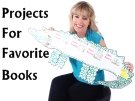- Visit Top 3 Pages Here ==>
- [1] Book Report Projects
- [2] Creative Projects For Children's Books
- [3] Book Report Value Pack - Save 70%
Spelling Teaching Resources
and Lesson Plans

spelling teaching resources bulletin board display banner:
Welcome to my Spelling Lesson Plans page.
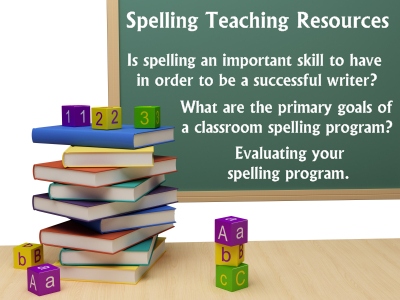
On this spelling lesson plans page,
you will find information about the following topics:
- Is spelling an important skill to have in order to be a successful writer?
- What are the primary goals of a classroom spelling program?
- Evaluating your spelling program.
The 5 components of my spelling program:
- Learning high frequency words.
- Learning common spelling rules.
- Reviewing commonly misspelled words.
- Using weekly word lists to build up knowledge of important words.
- Students' personal lists of frequently misspelled words.
I hope that the spelling teaching resources and information
on this page assist you in building your own spelling program.
Please be reminded that the information on this page is my own personal opinion.
I have created this spelling teaching resources page because I have received numerous
letters from teachers asking me to share the successful spelling strategies that
I have used with my own students during my 22 years as a classroom teacher.
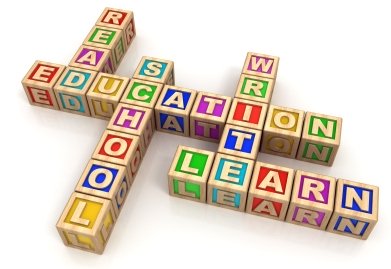
Is spelling an important skill to
have in order to be a successful writer?
![]()
 Do you believe that teachers should include spelling
lessons as a part of their language arts curriculum?
Do you believe that teachers should include spelling
lessons as a part of their language arts curriculum?
![]() If you answered "no" to this question, please consider the following:
If you answered "no" to this question, please consider the following:
- Poor spelling creates a bad impression because it's the first thing a reader notices.
- Anxiety about spelling inhibits a child's writing, especially their choice of words.
- Examiners, teachers, and prospective employers often place undue weight on spelling.
- Even with the advancement of computers and using a spell checker, students can not rely on spell checkers to correct all of their spelling errors for them (see the poem below for an example).
"Knowing how to spell the often used words in everyday writing is,
and will continue to be, one quality society expects of a literate person."
~Rebecca Sitton
"It is possible to teach spelling and still
remain true to the philosophy of whole language."
~Regie Routman
![]() In the years of rapid technology development, many computer users have
expressed that they don't need to learn how to spell because the spell
checker in their computer will solve their spelling mistakes.
In the years of rapid technology development, many computer users have
expressed that they don't need to learn how to spell because the spell
checker in their computer will solve their spelling mistakes.
![]() The poem that follows illustrates the problem that homophones, and other
spelling quirks, can present for the spell checker:
The poem that follows illustrates the problem that homophones, and other
spelling quirks, can present for the spell checker:
Owed to My Spell Checker

Eye halve a spelling chequer
It came with my pea see
It plainly marques four my revue
Miss steaks eye kin knot sea.
Eye strike a key and type a word
And weight four it two say
Weather eye am wrong oar write
It shows me strait aweigh.
As soon as a mist ache is maid
It nose bee fore two long
And eye can put the error rite
Its rare lea ever wrong.
Eye have run this poem threw it
I am shore your pleased two no
Its letter perfect awl the weigh
My chequer tolled me sew.
~Author Unknown
What are the primary goals
of a classroom spelling program?

![]() I believe that teaching spelling skills and strategies is part of teaching our students to
become proficient writers. It is not the most important skill in the writing process, but
I feel that spelling needs to be taught as a part of the language arts curriculum.
I believe that teaching spelling skills and strategies is part of teaching our students to
become proficient writers. It is not the most important skill in the writing process, but
I feel that spelling needs to be taught as a part of the language arts curriculum.
![]() On this page, you will find spelling teaching resources and information to assist
you in building your own spelling program.
On this page, you will find spelling teaching resources and information to assist
you in building your own spelling program.

![]() The primary goals of a classroom spelling program should be:
The primary goals of a classroom spelling program should be:
- to recognize that spelling is a developmental process and inventive spelling is a natural step in the process
- to develop your students' spelling mastery of high-use words, the words they use most often in their writing
- to introduce students to spelling strategies that lead to spelling success
- to integrate spelling with listening, speaking, reading, writing, and thinking
- to teach spelling and proofreading skills within the writing process
- to provide daily writing opportunities across the curriculum to build students' personal spelling word banks
Evaluating Your Spelling Program:

![]() Consider the following recommendations as you evaluate a spelling program and the
spelling teaching resources that you use:
Consider the following recommendations as you evaluate a spelling program and the
spelling teaching resources that you use:
- Spelling words used the most frequently in writing should be the words studied by students.
- Spelling words should be presented in list form, rather than in sentences or paragraphs.
- Use a pretest when introducing a list of spelling words. Then, each student only needs to study the words that are shown to be difficult for him or her. The test-study-test method is superior to the study-test method when working with most students.
- Under your direction, allow students to self-correct their own test, as this is an important factor in learning to spell.
- Spelling words should be words that are already known and used in reading by your students. It should not be necessary to spend time on word meanings.
- The practice of having a student copy a word several times in quick succession has little or no value in learning how to spell.
- Invented spellings play an important role in a student's spelling development. Once a word has been introduced and practiced, however, the student should be expected to use the standard spelling of that word.
- Spelling ability is defined as the ability to write a word rather than to spell it orally. You should not formally assess students on their oral spelling skills.
- When you are teaching spelling rules to your students, chose rules that apply to a large number of words and that have few exceptions.
- Spelling words should be presented and written in print form. The visual image of the word in print will match what everyday reading requires, reading words in printed text. The best time to practice cursive handwriting is during dictation exercises and actual writing activities.


![]() With a teaching degree in learning disabilities and 22 years of teaching experience, I
have come across a lot of spelling programs and spelling teaching resources.
With a teaching degree in learning disabilities and 22 years of teaching experience, I
have come across a lot of spelling programs and spelling teaching resources.
- I have been in schools where my principal has refused to allow teachers to use a spelling program, and she felt that spelling skills would develop naturally in our students.
- I have seen teachers use spelling programs that spend hours during the school week on teaching spelling through drill and practice.
![]() I have found that there is a happy balance between these two extremes.
I have found that there is a happy balance between these two extremes.
![]() Many of the parents that I have talked with have felt that spelling has been neglected in
recent years, and that this neglect shows up time and again in their child's everyday writing.
Many of the parents that I have talked with have felt that spelling has been neglected in
recent years, and that this neglect shows up time and again in their child's everyday writing.
![]() Spelling instruction should take up approximately one hour of instructional
time during the school week and should be broken into time slots throughout
the week.
Spelling instruction should take up approximately one hour of instructional
time during the school week and should be broken into time slots throughout
the week.

The five key components that I focus
on during my spelling lessons are:
- Learning high frequency words.
- Learning common spelling rules.
- Reviewing commonly misspelled words.
- Using weekly word lists to build up knowledge of important words.
- Students' personal lists of frequently misspelled words.
Below are spelling teaching resources that you can view that I have
created in focusing on these five areas of spelling instruction.
Many of these spelling teaching resources are free downloads
that you can download and use immediately.
1. High Frequency Word Lists
Fry 1000 Instant Words and Dolch Sight Words:
After students have mastered reading their high frequency sight words, they should also be able to spell these words correctly in their own writing.

Sight words are the most frequent words that students use in their writing, so it is important for children to learn the correct spelling of these key words.
 The Fry 1000 Instant Words are
a list of the most common words used for teaching reading,
writing, and spelling.
The Fry 1000 Instant Words are
a list of the most common words used for teaching reading,
writing, and spelling.
These high frequency words should be recognized instantly by readers. Fry's sight words are a list of the most common words in English ranked in order of frequency.
Click on the links below to download these
free spelling teaching resources for Fry's sight words.
- FREE: Fry's First 100 Word List and Free Flashcards
- FREE: Fry's Second 100 Word List and Free Flashcards
- FREE: Fry's Third 100 Word List and Free Flashcards
- FREE: Fry's Fourth 100 Word List and Free Flashcards
FREE: Fry's Fourth 100 Word List and Free Flashcards (UK Version) - FREE: Fry's Fifth 100 Word List and Free Flashcards
- FREE: Fry's Sixth 100 Word List and Free Flashcards
FREE: Fry's Sixth 100 Word List and Free Flashcards (UK Version) - FREE: Fry's Seventh 100 Word List and Free Flashcards
- FREE: Fry's Eighth 100 Word List and Free Flashcards
FREE: Fry's Eighth 100 Word List and Free Flashcards (UK Version) - FREE: Fry's Ninth 100 Word List and Free Flashcards
- FREE: Fry's Tenth 100 Word List and Free Flashcards
- FREE: Fry's 100 Picture Nouns List and Free Flashcards
 The Dolch Sight Words are
a list of spelling teaching resources of the
most frequently used words in the English language.
The Dolch Sight Words are
a list of spelling teaching resources of the
most frequently used words in the English language.
These sight words make up 50 to 70 percent of any general text.
The Dolch list contains 220 words that have been arranged by levels of advancing difficulty, as well as a list of 95 Dolch nouns.
Click on the links below to download these
free spelling teaching resources for Dolch's sight word words.
- FREE: Preprimer Dolch List and Free Flashcards
- FREE: Primer Dolch List and Free Flashcards
- FREE: First Grade Dolch List and Free Flashcards
- FREE: Second Grade Dolch List and Free Flashcards
- FREE: Third Grade Dolch List and Free Flashcards
- FREE: Dolch Noun List and Free Flashcards
2. Teaching Common Spelling Rules
Common Spelling Rules:
 There are some spelling generalizations, or rules, that can help your students remember
unique spelling features.
There are some spelling generalizations, or rules, that can help your students remember
unique spelling features.
By teaching your students these common spelling rules, you are helping them to generalize the concept of one spelling rule that will apply to many words.
Teachers should focus on teaching spelling rules that apply to a large number of words, and that have very few exceptions to the rule.
The following spelling rules apply to a large number of words and have very few exceptions to the rule. I teach these 7 rules to my own students.
- Doubling Rule: Some words double the final consonant when adding a suffix that begins with a vowel. (ex. get + ing = getting)
- Final E Rule: Some words drop the final E when adding a suffix that begins with a vowel. (ex. have + ing = having)
- Y Rule: Some words change Y to I when adding a suffix not beginning with I. (ex. try + ed = tried)
- Changing Singular Nouns to Plural Nouns By Adding S: Most nouns form the plural by adding S. (ex. dog + s = dogs)
- Changing Singular Nouns to Plural Nouns By Adding ES: Nouns ending with S, SS, SH, CH, and X form the plural by adding ES. (ex. inch + es = inches)
- Changing Singular Nouns that End in Y to Plural Nouns: Some nouns form the plural by changing Y to I when adding ES. (ex. country + es = countries)
- Changing Singular Nouns that End in F or FE to Plural Nouns: Some nouns form the plural by changing F or FE to V when adding ES. (ex. half + es = halves)

3. Commonly Misspelled Words
Commonly Misspelled Words:
Below you will find some free spelling teacher resources for words that students commonly misspell.
 These spelling teacher resources are not leveled by grade, but instead
are lists of words that students often misspell throughout
all of the primary school grade levels.
These spelling teacher resources are not leveled by grade, but instead
are lists of words that students often misspell throughout
all of the primary school grade levels.
- FREE: 100 Commonly Misspelled Words: List and Free Flashcards
FREE: 100 Commonly Misspelled Words: List and Free Flashcards (UK Spelling) - FREE: The Horrible 100: List and free flashcards of more challenging words that are commonly misspelled.
4. Weekly Spelling Lists
Using weekly word lists to build
up knowledge of important words.
I believe that students should be given a weekly list of spelling words to learn and master.
This list should contain between 10 - 25 words, depending upon the grade level that you teach. Students who find spelling challenging, should be given shorter lists to master each week.
 On Monday, students should be given a pretest of the words on this
list. They should grade their own paper, marking or highlighting the
words that they need to practice during the school week.
On Monday, students should be given a pretest of the words on this
list. They should grade their own paper, marking or highlighting the
words that they need to practice during the school week.
On Wednesday, you should assess all of the students in your classroom on this word list. Again, students should grade their own papers. Students who miss words on this day, should continue practicing the words that they missed.
On Friday, only assess the students who did not show mastery of their spelling words on Wednesday.
As you select the spelling words for your weekly lists, you must first consider your students.
I consider the following when I am selecting spelling words for a list:
- high frequency words
- commonly misspelled words
- spelling rule that I am currently reviewing with my students
- 6 high frequency words
- 7 commonly misspelled words
- 7 words from a spelling rule that is currently being reviewed.
5. Students' Personal Lists of Frequently Misspelled Words
spelling conferences with students:
During the writing process, students should check their own work for spelling errors and keep a personal list of words that they need to learn how to spell correctly. This should be on-going throughout the year and a part of your writing program.
Periodically, you should give individual informal and formal spelling assessments to your students based on their own personal lists of words that they commonly misspell.
 I administer these informal and formal spelling assessments
while I am having individual writing
conferences with my students. During a writing conference, I have
students get out their personal lists of misspelled words.
I administer these informal and formal spelling assessments
while I am having individual writing
conferences with my students. During a writing conference, I have
students get out their personal lists of misspelled words.
During this time, I help my students decide if they need to add any new words to their lists. Next, I have students practice spelling a few words that are on their personal lists.
My students enjoy this individual attention that is directed at their own spelling ability.
These informal writing and spelling conferences work equally well with students of lower and higher spelling abilities.
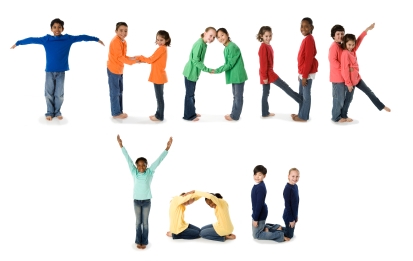
Thank you for visiting my Spelling Teaching Resources page.
page assist you in building your own spelling program.
I have created this spelling teaching resources page because I have received numerous
letters from teachers asking me to share the successful spelling strategies that
I have used with my own students during my 22 years as a classroom teacher.
Please be sure to check out the other pages on Unique
Teaching Resources for a large variety of fun lesson plan activities
that will engage your students in learning and save you valuable time.

Creator and Website Manager
Unique Teaching Resources

- *View All Book Report Projects*
- Cheeseburger
- Sandwich
- Main Character Body
- Monopoly Gameboard
- Wanted Poster
- Biography Newspaper
- 70% Off Value Pack
28 Book Reports
+ 14 Free Gifts - *View All Book Titles*
- Charlie and the Chocolate Factory
- The Enormous Crocodile
- The Giving Tree
- Shiloh
- First Day Jitters
-
Aug. / Sept.
Back To School - Peace Day (Sept. 21)
- Oct. / Halloween
- Nov. / Thanksgiving
- Dec. / Jan. / Winter
- Feb. / Valentine's Day
- Groundhog Day
- Mar. / St. Patrick's Day
- April / May / Spring
- Earth Day (April 22)
- Mother's Day
- Father's Day
-
June / July
End of School Year - Reading Introduction
- Unique Book
Report Projects - Tips For Using
Book Report Projects - Fun Projects For Favorite Books
- Free Sight Word Flashcards
- Newbery and
Caldecott Book Lists - Writing Introduction
- Writing Prompts For
January - December - Fun Writing Templates
- Fun Poetry Templates
- Printable Worksheets For Creative Writing
- Free Teaching Resources List
- Free Newsletter
- Free Printable Classroom Calendars
- Free Bulletin Board Display Banners
- Quotes About Teaching - Free Printable Posters
- Free Flashcards
- Writing Prompts For
January - December - Classroom & Bulletin Board Display Ideas
- Heidi's Blog
- About Heidi
- Teacher Testimonials
- Frequently Asked Questions
- Contact Heidi
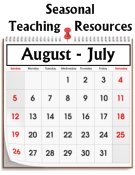
Reading Comprehension
Written Expression
Other Curriculum Areas
Positive Reinforcement
Free Downloads

Teacher's Corner
Let's Stay Connected!
To join our fun
Facebook community
of over 118,000 teachers,
click the "Like" button below.
"Teachers Have Class!" Newsletter



Click on the book titles
below to view each project.
Click on the book titles
below to view each project.
- The Giving Tree
- How the Grinch Stole Christmas
- Shiloh
- Stellaluna
- The Whipping Boy
- First Day Jitters
- Many More Book Titles
More Book Report Projects:
- Monopoly Gameboard
- Main Character Body
- Wanted Poster
- Biography Newspaper
- Castle
- Butterfly
- Caterpillar
- Dive Into Reading Fish
- *View All Projects*
70% Off Value Pack
28 Book Report Projects
+ 14 Free Gifts






